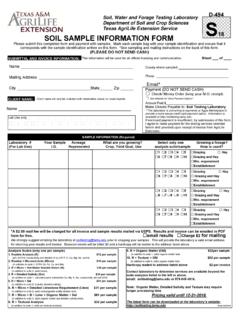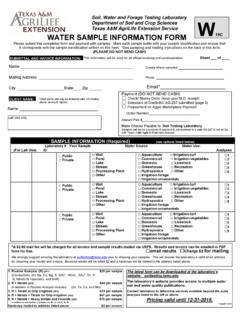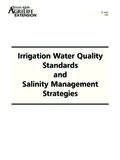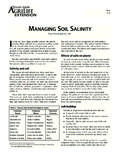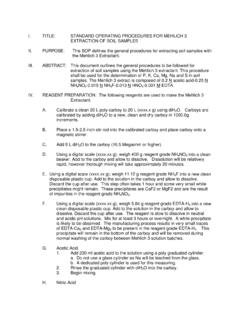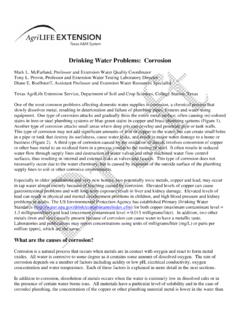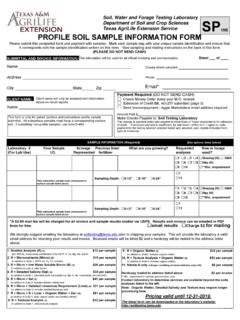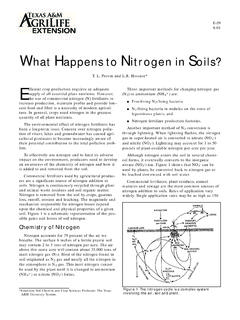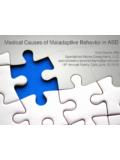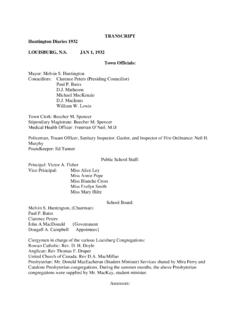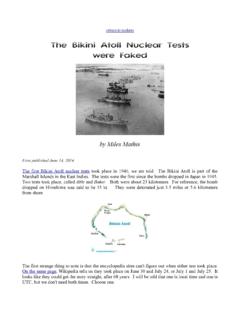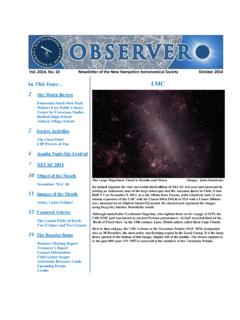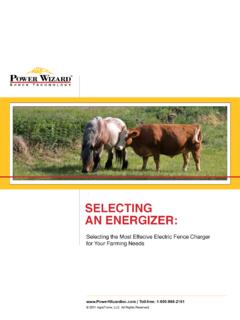Transcription of Water Management: Clearing Cloudy and Muddy …
1 1 Water management : Clearing Cloudy and Muddy Water in Ponds and Provin and PittProfessor and Soil Chemist, Program SpecialistTexas A&M AgriLife Extension Service Soil, Water and Forage Testing LaboratoryDepartment of Soil and Crop SciencesCloudy or Muddy Water and ponds can be aesthetically unpleasing and potentially dangerous. While swimmers will often avoid such waters simply because of aesthetics, debris and the un-known may lurk below the surface. Anything from broken glass, trash and roots to potentially dangerous wildlife can quickly turn a fun filled afternoon into a tragedy. Additionally, Muddy Water can be detrimental to aquatic life by reducing sunlight penetration, thereby limiting food produc-tion for game fish and other aquatic animals. Cloudy Water interferes with the ability of certain fish, including bass, to see and capture prey. Muddy waters may impart a bad flavor to fish.
2 Such waters also can promote the undesirable growth of blue-green algae and bacteria. Causes of Cloudy , Muddy WaterIt is important to determine the cause of the cloudiness, or turbidity, in order to properly treat the wa-ter. Turbidity is simply the measurement of Water clarity which may be due to suspended solids, al-gae, and/or dissolved organic materials. The most common cause of pond turbidity is the presence of suspended particles, mainly clay, in ponds. The extremely small size of the clay particles results in continual re-suspension due to changes in Water temperature, wind, and/or Water 2 How do the clay particles get suspended in the first place? The primary source of suspended clay particles is soil erosion. Rainfall runoff, can dislodge clay par-ticles particularly from over-grazed pastures, bare croplands, and exposed shorelines and transport it across the land surface to waterways.
3 Compacted soils, soils with limited Water filtration capacity and soils on moderate to strong slopes are particularly prone to erosion, unless care is taken to maintain a good vegetative or crop residue cover on the surface. Photos courtesy of USDA-NRCS Photos courtesy of USDA-NRCSW hile wave erosion is a natural process, it can be significantly magnified by livestock trampling of the shoreline and wading in the ponds. This can suspend sediment and also may contribute large quantities of manure. Photo courtesy of USDA-NRCS Photo courtesy of Lynn Betts, USDA-NRCS.
4 3 Other animals, including feral hogs, deer, ducks and geese also can contribute to shoreline dete-rioration and/or stirring of bottom sediment. Furthermore, the activity of bottom-feeding fish such as carp and bullheads also can affect Water clarity. These animals root and stir up the bottom sediments in search of some cases, intermittent turbidity of Water can simply be the result of high winds, rapid changes in air temperature or recent high levels of precipitation. Each of these events can result in thermal currents occurring within the pond resulting in movement of Water and sediment at the bottom. These thermal currents are more likely to occur in shallow ponds or on the ends of ponds. Prior to initiating any remediation steps, wait a week or two after the weather condition has passed to evaluate if sediment is settling. How do I determine the cause of the problem?
5 Limited cloudiness often observed following a rainfall event will usually clear within a few days. The cause is typically re-suspension of sediment on the bottom of the pond due to inflow. Cloudi-ness that remains longer than a few days may indicate a more serious problem that should be addressed to maintain the quality of the pond and prevent future Water quality impairments. Photo courtesy of Russ Kirth, USDA-NRCS Photo courtesy of USDA-Forest ServiceBiological causes are due to animal activity around or in the pond. To a lesser degree, the activity of ducks and geese may also impair the Water quality. The activity of bottom-feeding fish such as carp and bullheads along with crayfish can also affect the clarity of the Water . These animals root and stir up the bottom sediments in search of food. If a Cloudy or Muddy condition persists for more than a few days, it will be necessary to determine the primary cause of the problem.
6 First, take a Water sample and let it set undisturbed for 24 4hours. If the sediment settles and the Water clears, the problem is likely re-suspension by some type of activity. For example, too many nuisance fish or cattle wading in the pond may be stirring up the sedi-ment. Alternatively, the Water may be too shallow which allows the wind to keep sediments suspended. If the sediment remains suspended, the problem may be due to the chemistry of the Water and chemi-cal treatment may be do I prevent or correct Cloudy or Muddy Water ?Prevention is the best means for eliminating the need for remedial action to clear a Muddy pond. It is easier to keep soils, especially clay soils, from entering Water than to remove them. The following factors can help minimize or prevent soil erosion and disturbance of pond sediments: 1. Match the watershed size to the pond size when planning a pond.
7 In general, 10 15 acres of watershed land will support one surface acre of pond. The required watershed size is depen-dent on multiple factors including climate, soil types, and soil slopes within the watershed, and depth of the pond. 2. Maintain vegetative cover in the watershed area. In production agriculture areas, hay crops provide much better erosion control than row crops. 53. If cover crops can not be maintained in the watershed area, utilize wide vegetative buffer strips around the pond to trap sediment before it can enter the Water . 4. Do not stock ponds with nuisance fish such as carp, goldfish or bullheads, instead, stock pond with largemouth bass or other predator fish that can control the nuisance fish. If nui-sance fish already are present, they should be removed.
8 Drain or seine the pond to remove the undesired fish. If these approaches are not practical, fish toxicants can be used. The labeling for fish toxicants may change over time. A current reference of fish toxicants is listed in the reference sec-tion of this publication. 65. Limit the access of cattle to the pond to prevent erosion of banks and distur-bance of shallow waters. Further information on best management practices to prevent erosion caused by grazing cattle is available in Lone Star Healthy Streams: Beef Cattle Manual, B-6245, available at 6. Keep ducks and geese away from the pond. This is particularly important if the pond or stream has very shallow Water near the shores, as the webbed feet of these birds will constantly stir up sediment. , Discourage foraging around the pond using annoy-ance techniques such as air cannons or dogs to scare the birds away.
9 Products that can be applied to vegetation around the pond to make the vegetation unpalatable are also avail-able. Domestic ducks or geese (ie. Pekin, Rouen, and etc.) should be limited to one pair per surface Limit introduction of organic matter and organic carbon into pond. While using hay or other organic matter is suggested to clear Muddy waters, these practices can have nega-tive results to Water quality and aquatic life. Caution must be exercised when using organic matter as decomposition of the material can lead to low oxygen levels and fish kills. Organic matter should not be used in ponds with a history of fish kills or during summer months when dissolved oxygen levels may already be limiting. If organic applications must be made during the summer months, supplemental aeration may be needed to prevent fish Treatment of Ponds If the cause of turbidity is chemical in nature, gypsum (calcium sulfate), Epson salts (mag-nesium sulfate), aluminum sulfate (alum), or limestone (calcium carbonate) can be used to clear Muddy ponds by removing suspended clay particles.
10 Gypsum is a neutral salt and will not affect the pH of the pond. Although aluminum sulfate is most effective for settling clay particles, it can decrease the pH in some waters such that aquatic life may be harmed. This is a major concern for ponds in East Texas, that typically have low pH and total alkalinity. The generic term for East Texas ponds refers to the ponds located in the higher rainfall areas of the eastern portion of the state where the soils around and in the pond are comprised of lower clay and lower buffering ca-pacity soils. The rapid recharge of these ponds often results in very treatment to use?The selected amendment is largely dependent on pond Water chemistry, availability of product and application capacity. Waters lower in pH or alkalinity are not good candidates for the use of aluminum sulfate. Aluminum sulfate will further lower the Water pH and alkalinity creating ad-ditional problems.
